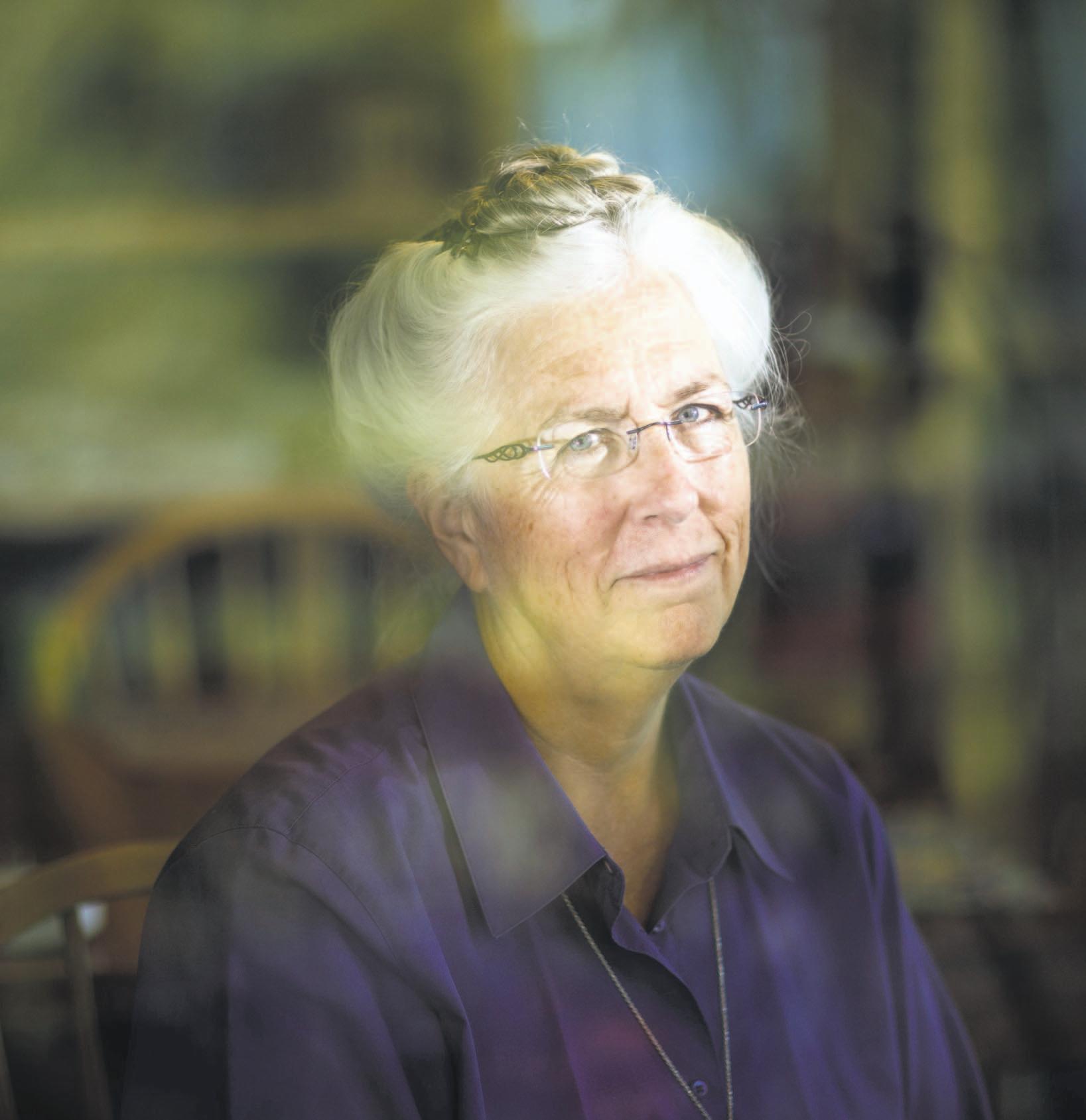
5 minute read
escape
STORY BY ANGELA HILL PHOTOS BY KARL MONDON/STAFF
It was a bright and sunny afternoon — but the deceptive kind that seems swell but sends shadows looming large and hides riddles inside enigmas wrapped tight in conundrums and stuffed in the trunk of an old Chevy Corvair.
Well, actually, those puzzles were stuffed in a cave of a building, the back of the old exhibit hall at San Francisco’s Palace of Fine Arts, where the Exploratorium once was. Now the space houses Palace Games, a diabolical den of escape rooms crammed with tricks, traps and trepidation, a place where you have to puzzle your way out or die trying – or at least end up looking lame in front of your friends.
We assembled a mysterious group to face the challenge— a cadre of Conan Doyles, a cache of Christies, a huddle of Hammetts, a squad of Spillanes, Bay Area mystery writers all. Among them, Carole Price, author of “Vineyard Prey”; Margaret Dumas, “Murder at the Palace”; Simon Wood, “Saving Grace”; Ann Parker, “A Dying Note”; and Janet Finsilver, “Murder at the Marina.” Plus the group’s ringleader, Penny Warner —”The Code Busters Club” and “The Official Nancy Drew Handbook” — and her husband Tom (not a mystery writer, but probably a decent Joe in his own right. Or Tom, as the case may be).
A group of mystery writers trying their hand at solving the Edison Escape Room at the Palace Games finally find the exit.
At left, Mystery writer Penny Warner looks for clues.
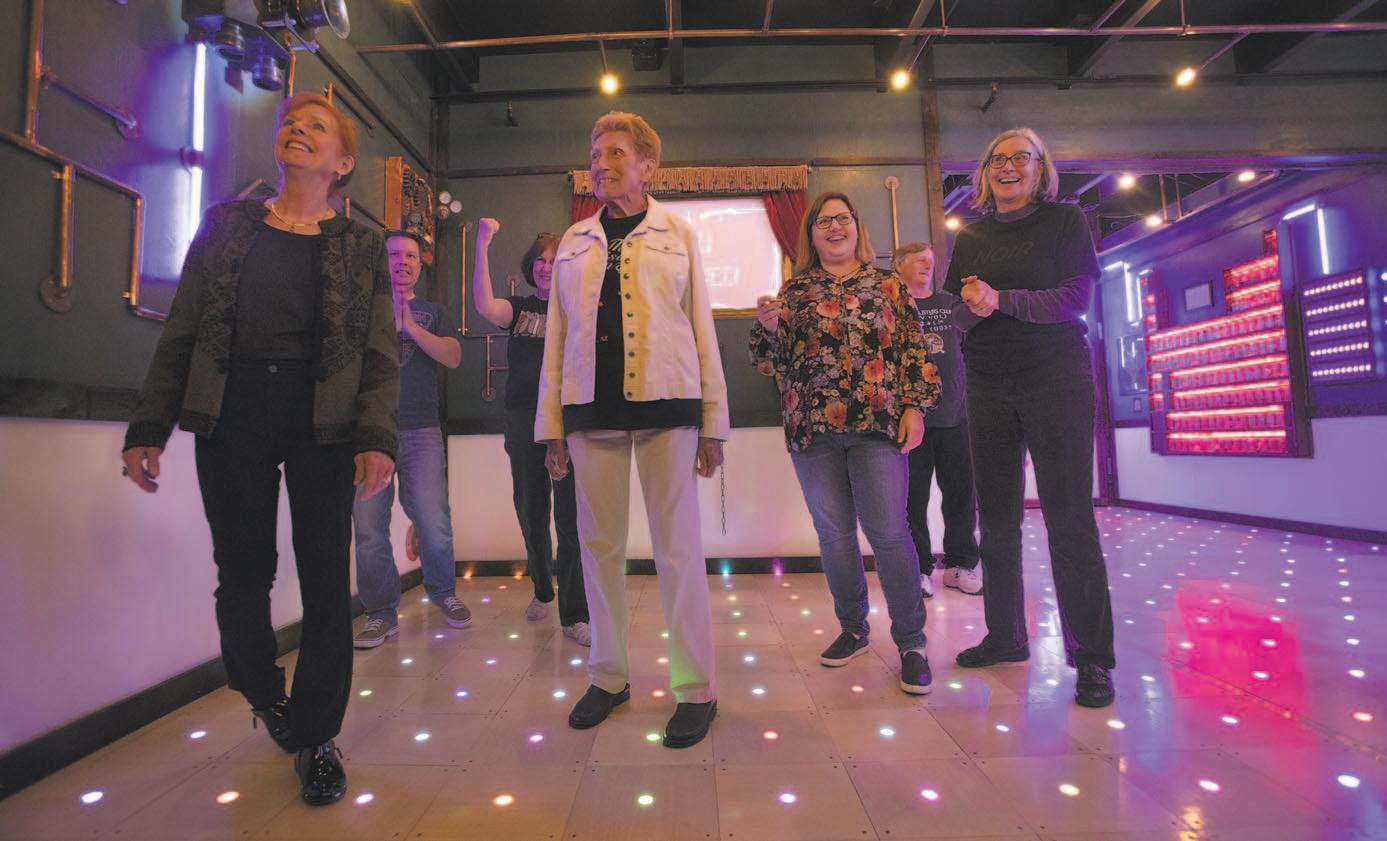
All (except maybe Tom) are pros at dropping clues, and they already pack a Carolyn Keene sense of adventure. But could they turn it around, reverse engineer a plot, solve the mystery and get out without looking lame?
Indeed, the gumshoe was on the other foot. The game was afoot, too. Combined, these made for a challenging feat.
“We’re very good at solving the puzzles that we write, but that’s a different story,” joked Penny, clad in an apropos “Clue” T-shirt.
On a recent Wednesday morning, they checked in at the Palace Games front office and chose a team name: “Writers Cramped.” Perfect. A quick pit stop and they were ready to go. “We managed to escape the restroom, at least,” Dumas said with a wry grin.
A guide, known only as Greg
– an alias, perhaps? – led them down blood-red hallways to a tiny room that fit their “cramped” moniker. Staged to resemble a Victorian-era parlor, The Edison Room is one of three “escape rooms” at the Palace, and, Greg said, it’s rated sixth-best in the world.
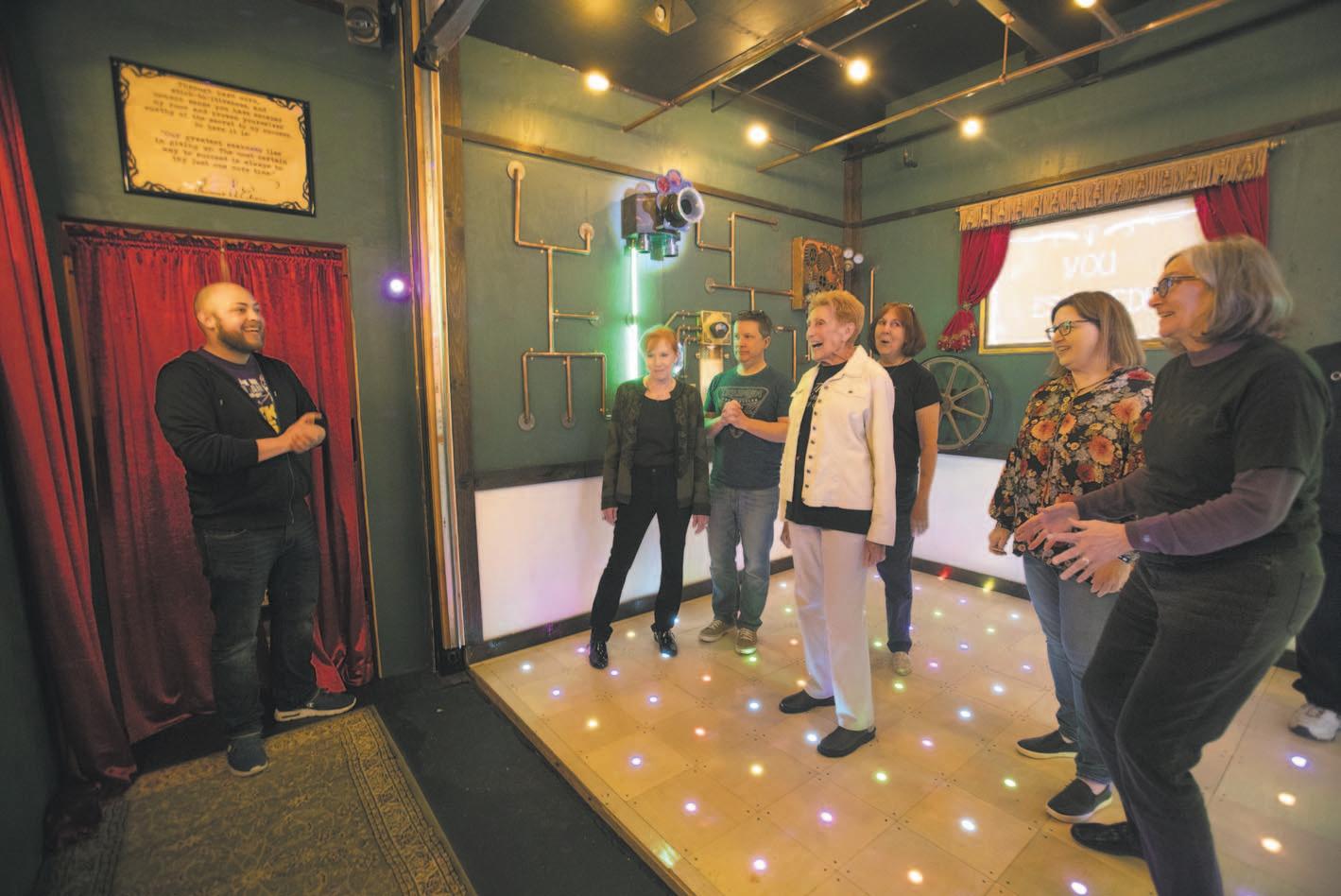
With the game about to begin, nerves and neck hairs were on edge. You could slice through the tension like a blade through a carotid artery.
In the Edison Room, there were, as expected, Edison lightbulbs. Plus a gramophone, a tin ceiling, corner cabinets with apothecary jars and padlocks on top of padlocks. Were these the clues? Was everything a clue?
“Not the rug,” Greg warned, “so don’t pull up the rug.”
Check. No rug. But probably everything else meant something else. A cryptic audible message – ostensibly from Edison himself
– crackled over the gramophone: “Within my hidden laboratory lies the secret to my success.” Helpful. Not.
The team set to work, tugging on drawers, moving chairs, turning up pieces of a wooden puzzle. Then hunched over a desk, heads together like a pack of dogs on the scent of juicy meat, they assembled the image. There were symbols. A code?
“This looks like a horse. This looks like water,” Wood announced with glee. “This one either means fire or the Rebel Alliance.”
Finsilver took charge of the paper and pencil conveniently — and mysteriously — stashed on the desk, keeping notes of various clues. Others knocked on walls, checking for secret panels. There were no secret panels. But having laid such traps themselves in literary realms, the mystery writers knew this one room wasn’t the whole shebang. Surely a passage would emerge.
Someone pointed to a large photo of Edison on the wall, guessing it was the door. “I’m suspicious of anything so obvious,” Finsilver said, suspiciously.
It was the door. It was obvious.
Someone did something – they weren’t sure what – and the lights suddenly flickered. Edison’s photo slid into the wall, revealing a lab- oratory with all manner of dials, wheels, schematics and test tubes.
The team had been told they had 100 minutes to complete the whole escape. They’d be alerted to the fast-passing time by the ring of an old-fashioned telephone, the kind you’d find on the battered desk in the seedy office of a sketchy private eye.

The phone rang. Already?
The amateur sleuths began spinning wheels, on the wall and in their minds. They activated various light tubes trying to find a pattern, but to no avail. They needed a sign. Luckily, there was a sign.
“When all else fails, read the sign!” Wood said.
Lights flickered again. Another secret passage opened, leading into an even larger room filled with illuminated jars and gizmos. More and more complex, the riddles became. More and more annoying, the ringing phone became. Time ticked a swift staccato.

When Price found a set of keys, they all charged back to the first room with the still-locked cabinets and locked desk drawer. Eureka! Inside, a puzzle box with jars. Symbols. Patterns. What could they mean? More puzzles and codes, more rooms, more tricks. Time closed in like the lid of that Chevy trunk, slamming down on top of them.
They took heart from a framed Edison quote, which also turned out to be a clue: “I have not failed. I have just found 10,000 ways that won’t work.”
Finally, time ran out like a perp from a crime scene. Greg, if that’s his real name, popped in out of nowhere to offer some cryptic help.
“It was a hint, not help,” Wood said.
“Besides,” Parker added, “when do writers ever meet their deadlines?”
The hint enabled the final solution, only about seven-percent late. Victory, without murder, most foul or otherwise. No crime, no punishment. Just a time to chill and make the long goodbyes.
Escape Into A Book
Penny Warner has written more than 50 award-winning books for adults, teens and kids, including “The Code Busters Club” mystery series and three food-centric San Francisco mysteries; www.pennywarner.com.

Carole Price’s “Shakespeare in the Vineyard” series, which includes “Vineyard Prey,” mixes Livermore’s wine country with plenty of Shakespearean drama and murderous mayhem; https://carolepricemysteries.com.
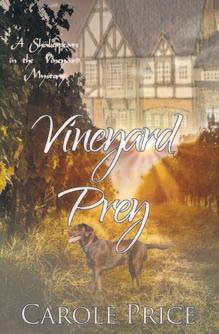
Margaret Dumas’ just-published “Murder at the Palace” uses a vintage San Francisco movie theater as the setting for murder, mayhem and ghostly sightings; www. margaretdumas.com.

Simon Wood’s latest thriller, “Saving Grace,” places a former reporter and his family in peril as a San Francisco kidnapper threatens the city; http://simonwood.net.
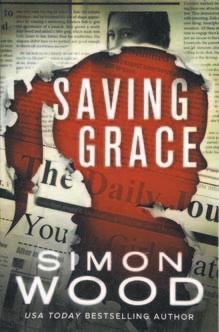
Ann Parker’s 19th-century mysteries — including “A Dying Note,” which involves a San Francisco music store and a madam called Frisco Flo — take place during the Wild West’s Silver Rush; www.annparker.net.
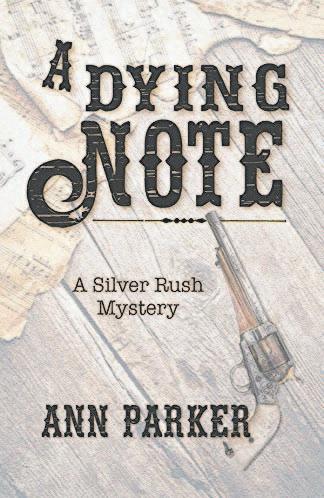
Janet Finsilver’s mysteries — including “Murder at the Marina,” which was published in April —revolve around an innkeeper-turnedamateur sleuth in the Mendocino-esque town of Redwood Cove; http://janetfinsilver.com.
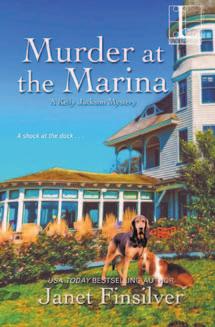
Escape At The Palace
San Francisco’s Palace Games offers three types of Victorian-era escape rooms ($400 for up to 10 people) inspired by Thomas Edison, Harry Houdini and Theodore Roosevelt at the Palace of Fine Arts. Find details and book an escape room at https://palacegames.com.

